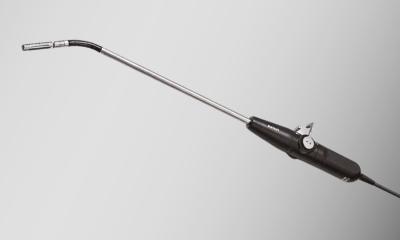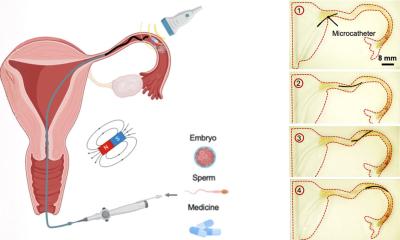Varicose veins
Promising way of treating male infertility
Varicose veins in testicles are common and harmless in most of the cases. But they can be the reason for unwanted childlessness. Venous embolization, a minimally invasive treatment, offers the opportunity to improve male fertility, as a study from the University of Bonn, Germany, shows.

The study, published in the August issue of Radiology, conducted at the University of Bonn in Germany, found that the level of sperm motility prior to treatment is a key predictor of success.
"Venous embolization, a simple treatment using a catheter through the groin, can help to improve sperm function in infertile men," said lead author Sebastian Flacke, M.D., Ph.D., now an associate professor of radiology at the Tufts University School of Medicine, director of noninvasive cardiovascular imaging and vice chair for research and development in the department of radiology at the Lahey Clinic in Burlington, Mass. "With the patients' improved sperm function, more than one-quarter of their healthy partners were able to become pregnant."
Normally, blood flows to the testicles and returns to the heart via a network of tiny veins that have a series of one-way valves to prevent the blood from flowing backward to the testicles. If the valves that regulate the blood flow from these veins become defective, blood does not properly circulate out of the testicles, causing swelling and a network of tangled blood vessels in the scrotum called a varicocele, or varicose vein.
Varicoceles are relatively common, affecting approximately 10 percent to 15 percent of the adult male population in the U.S. According to the National Institutes of Health, most cases occur in young men between the ages of 15 and 25. Many varicoceles cause no symptoms and are harmless. But sometimes a varicocele can cause pain, shrinkage or fertility problems.
The traditional treatment for problematic varicoceles has been open surgery, but recently varicocele embolization has emerged as a minimally invasive outpatient alternative. In the procedure, an interventional radiologist inserts a small catheter through a nick in the skin at the groin and uses x-ray guidance to steer it into the varicocele. A tiny platinum coil and a few milliliters of an agent to ensure the occlusion of the gonadic vein are then inserted through the catheter. Recovery time is minimal, and patients typically can return to work the next day.
Dr. Flacke and colleagues set out to identify predictors of pregnancy after embolization of varicoceles in infertile men. The study included 223 infertile men, ages 18-50, with at least one varicocele. All of the men had healthy partners with whom they were trying to achieve a pregnancy.
In the study, 226 of the patients' 228 varicoceles were successfully treated with embolization. A semen analysis performed on 173 patients three months after the procedure showed that, on average, sperm motility and sperm count had significantly improved. Six months later, 45 couples, or 26 percent, reported a pregnancy. A high level of sperm motility before the procedure was identified as the only significant pre-treatment factor associated with increasing the odds of successful post-treatment pregnancy.
"Embolization of varicoceles in infertile men may be considered a useful adjunct to in-vitro fertilization," Dr. Flacke said.
Picture: © Steffi Pelz / PIXELIO
31.07.2008





